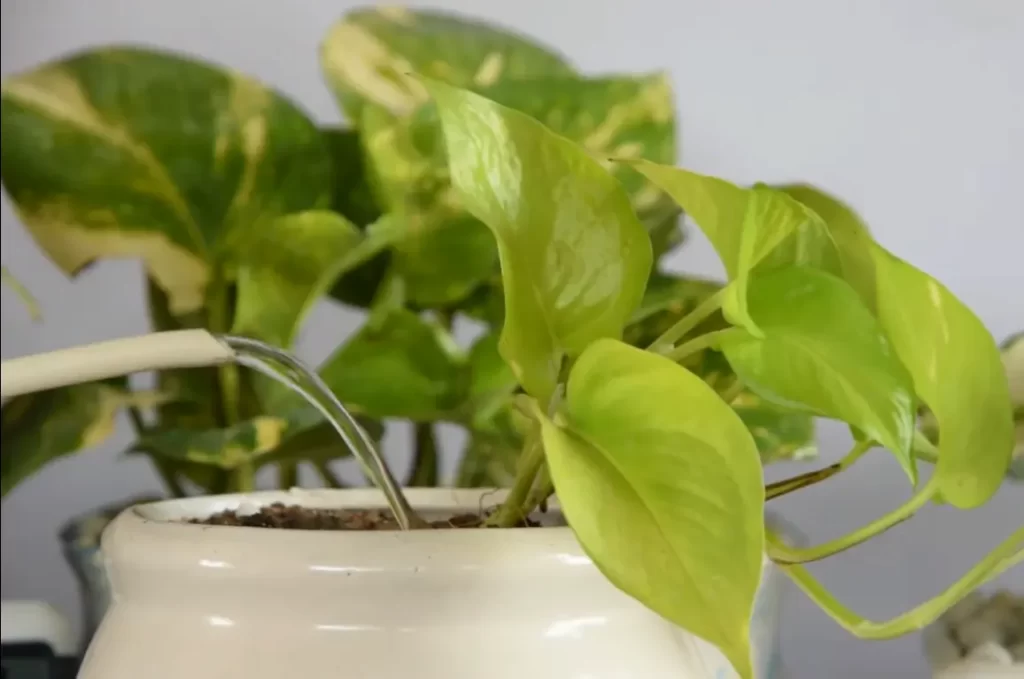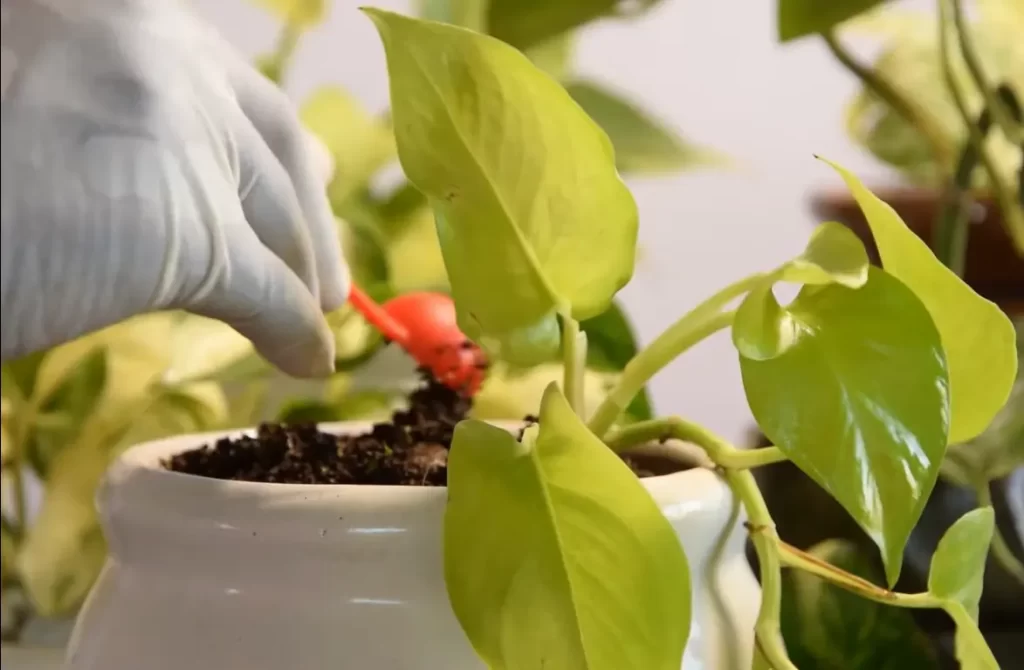Does Pothos Need Drainage? Everything You Need To Know
Pothos has become popular for indoor plant enthusiasts with its striking green leaves and easy care. However, like any plant, pothos has specific needs to thrive.
One of the most debated topics among pothos growers is: Does pothos need drainage? This is an important consideration, as proper drainage is essential for the health of any plant.
Yes, pothos plants need good drainage to thrive. Allowing the potting soil to become too saturated with water can lead to root rot and other problems.
In this blog post, we’ll take a closer look at the debate over whether pothos needs drainage and explore the pros and cons of keeping this plant in a pot without drainage.
What is Pothos?
Pothos is a popular indoor plant that is easy to care for and can grow in various environments. It is a vine plant with green, heart-shaped leaves that can trail or climb a trellis or wall.
Pothos typically prefers well-draining soil and proper drainage to prevent root rot from excess water. It can grow in low to bright, indirect sunlight conditions and does not require frequent watering.

Pothos can be propagated easily from cuttings, making it a popular choice for plant owners. It can also be grown in a planter alongside other plants, like spider plants or ferns. Fertilizers should be used sparingly to avoid overgrowth. However, most people have a common question: Are variegated neon pothos rare? If you also explore the linked content to explore whether variegated neon pothos is rare.
Does Pothos Need Drainage?
Yes, Pothos plants need proper drainage to thrive. These houseplants prefer well-draining soil, which means soil that allows excess water to drain out of the pot. When the soil is too moist or soggy, it can lead to root rot and other issues that can damage the plant’s growth and health.
Pothos plants require watering when the top inch of soil feels dry to the touch, and excess water should be allowed to drain out of the pot. It’s best to use a planter with drainage holes to ensure proper drainage.
Typically, pothos plants prefer indirect sunlight and do well in various indoor environments. They also benefit from occasional fertilizer and proper watering habits.
Importance of Drainage for Pothos
Pothos plants, also known as devil’s ivy, are popular houseplants due to their beautiful green leaves, low maintenance requirements, and adaptability to various light conditions. However, proper drainage is essential for their growth and overall health.
Prevents Waterlogging
Proper drainage is crucial for preventing waterlogging, which occurs when the soil becomes saturated with water and doesn’t allow air to reach the roots. This can lead to root rot, which can quickly kill the plant. Pothos plants are sensitive to overwatering; excess water can accumulate in the soil without proper drainage, leading to root rot.
Promotes Oxygen Availability
Drainage also promotes oxygen availability in the soil. When water is allowed to drain away, it creates space for air to enter the soil and reach the roots. This is important because roots need oxygen to function properly. The roots can become damaged without proper oxygen availability, leading to stunted growth or even plant death.
Encourages Nutrient Uptake
Good drainage is also important for nutrient uptake. When water can drain away, it carries any dissolved nutrients in the soil. This allows the roots to absorb these nutrients and use them for growth and development. Without proper drainage, nutrients can become trapped in the soil, leading to nutrient deficiencies and poor plant health.
Prevents Soil Compaction
Proper drainage can also prevent soil compaction. When soil becomes compacted, it can be difficult for water to penetrate and reach the roots. This can lead to waterlogging, oxygen deprivation, and other problems like nutrient deficiencies and stunted growth. Promoting drainage can help prevent soil compaction and keep your pothos plant healthy.
What Happens When A Plant Does Not Have Proper Drainage
Improper drainage is a common problem that plants can face when grown in containers or soil that does not allow water to flow through effectively. When a plant does not have proper drainage, it can lead to a host of issues that can negatively impact the health and growth of the plant.
Root Rot
Root rot is one of the most significant issues that can arise from poor drainage. When water accumulates in the soil and cannot drain away, it creates a breeding ground for harmful fungi and bacteria that can attack the plant’s roots. This can cause the roots to decay and die, ultimately leading to the death of the plant itself.
Stunted Growth
When a plant cannot drain excess water properly; it can lead to waterlogged soil. Waterlogged soil creates an environment where the roots cannot absorb the nutrients and oxygen required for proper growth. As a result, the plant’s growth may be stunted, and it may struggle to develop properly.
Yellowing Leaves
If a plant is overwatered or has poor drainage, it can accumulate salts in the soil. Excess salts can cause the plant leaves to turn yellow and eventually die off.
In some cases, the tips of the leaves may also become brown and crispy, indicating that the plant is suffering from a salt burn.
Pests and Diseases
When a plant is stressed due to poor drainage, it can become more susceptible to pests and diseases. Stressed plants are more vulnerable to attacks from pests like spider mites, aphids, and mealybugs, which can quickly spread and cause significant damage to the plant.
How to Care for Pothos with Drainage
Pothos plants are popular indoor plants that are easy to care for and grow. One of the essential factors for their growth is proper drainage.

Here are some tips on how to care for pothos with drainage:
Soil and Space
Pothos plants prefer well-draining soil that holds moisture but doesn’t become waterlogged. Use a universal soil mix or create your own by combining peat moss, perlite, and vermiculite.
The pot should have drainage holes to allow excess water to drain out. Choose a slightly larger planter than the plant’s root ball, giving it enough space to grow.
Watering and Drainage
Water your Pothos plant when the top inch of soil feels dry. Water thoroughly, allowing water to flow through the drainage holes and into a saucer.
After 15–20 minutes, empty any excess water from the saucer to prevent the plant from sitting in water. Avoid overwatering, as this can lead to root rot.
Light and Environments
Pothos plants thrive in indirect sunlight but can tolerate low-light conditions. Place your plant near a window that receives indirect light or use artificial lighting.
However, pothos plants also prefer a humid environment, so mist the leaves occasionally or place a humidifier nearby.
Leaf and Growth
Pothos plants have beautiful green leaves that can turn brown if exposed to direct sunlight or if the plant is under-watered.
Check the leaves regularly for any signs of damage or pests. Pothos plants can grow rapidly in the right conditions, and you may need to prune them occasionally to control their growth.
Fertilizer
Feed your Pothos plant once a month with a balanced, water-soluble fertilizer during the growing season (spring and summer). Dilute the fertilizer to half-strength and apply it to moist soil.
Wrapping Up
In conclusion, “Does Pothos need drainage?” is a question that can be answered with a definite yes. Pothos plants need adequate drainage to thrive and grow.
If they are not properly drilled, their roots can become waterlogged and cause the plant to suffer from root rot.
However, with proper drainage, pothos can thrive and make a beautiful addition to any home. Thus, be sure to provide your pothos with adequate drainage for the best outcome for your plant.
